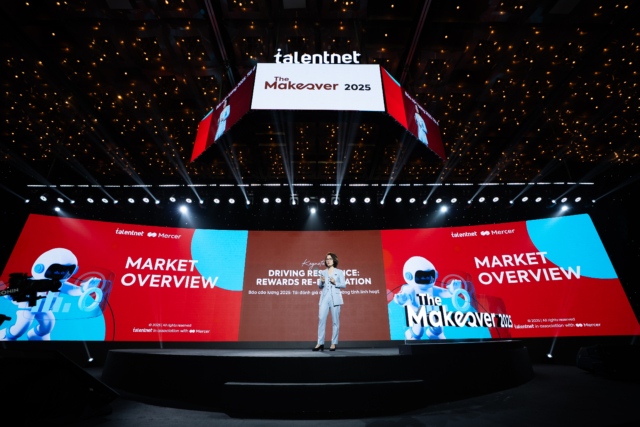AI In Small Businesses: Strategic Implementation Guide For Leaders

Aug 13, 2025
AI in small businesses is no longer tomorrow's technology. It's today's competitive weapon that your rivals are already using. For CEOs and business leaders, the focus isn't on the hype. It's based on real results. The key question isn't whether AI will change your industry. It's how AI can help small businesses like yours boost profits and beat the competition.

Key takeaways
- Companies using AI automation cut costs and finish work five times faster than manual processes.
- AI analytics tools boost sales and improve forecasting, giving small businesses the same edge as big companies.
- Only 16% of companies grow AI beyond test projects, making smart planning critical to avoid costly failures.
- Start with focused pilot projects, manage data well, and train employees to build the foundation for real growth.
This isn’t another general article about AI’s impact. This is a strategic guide for business leaders who need to know where, when, and how to implement AI in small business operations for maximum return. We give you a clear framework for finding the best opportunities and avoiding common mistakes. Your AI in small businesses investment will create real business growth, not expensive experiments.
The strategic opportunities of AI for your business
The competitive advantage once reserved for tech giants with unlimited budgets is now within reach of every business leader. Three core areas offer the highest return on AI in small businesses investment and the fastest path to measurable results.
Drive major gains in operational efficiency
AI automation gives you the fastest and clearest way to cut costs and boost productivity. By automating routine tasks, you free your team to focus on high-value work while dramatically reducing operating costs and improving accuracy.
The scope extends far beyond simple data entry. AI can handle complex back-office work including bookkeeping, invoice processing, scheduling, and inventory management. Companies using AI in small business operations consistently cut costs by 25-50% and finish processes up to five times faster than manual work. AI accounting platforms like Xero and QuickBooks now automate financial reconciliation and reporting tasks that previously required dedicated staff hours. This transformation demonstrates how AI improves efficiency across multiple business functions.
Supply chain optimization offers another significant opportunity. AI algorithms improve demand forecasting accuracy, optimize inventory levels, and reduce delivery times. Amazon’s AI-driven supply chain enables two-day delivery to over 100 million Prime members, contributing directly to 38% year-over-year growth in net sales. Small businesses can leverage similar AI tools to minimize waste, prevent stockouts, and optimize logistics with precision that was impossible through manual planning. Strategic implementation of AI for business growth requires understanding these operational transformations.
Make smarter, faster decisions with data
AI transforms raw business data into actionable competitive intelligence. Small businesses now access the same predictive analytics and business intelligence tools that provide market insights once available only to large corporations with dedicated data science teams.
AI-powered Customer Relationship Management (CRM) and Business Intelligence (BI) systems deliver measurable results:
- 37% increase in sales productivity
- 43% higher forecast accuracy
- Real-time analysis of customer behavior patterns and market trends
These tools identify opportunities that human analysis might miss. Instead of relying on gut feeling or limited historical data for inventory planning, AI analyzes hundreds of variables including seasonal trends, competitor pricing, economic indicators, and customer behavior patterns. This generates precise demand forecasts that enable small businesses to compete effectively against larger competitors through faster, more informed strategic decisions.
Redefine the customer experience
Modern customers expect personalized, instant service across all touchpoints. AI enables small businesses to deliver enterprise-level customer experiences without the overhead costs of large customer service teams.
AI-powered chatbots and virtual assistants handle customer queries 24/7, providing immediate responses and resolving common issues without human intervention. Companies using AI for conversational commerce report a 20% increase in customer satisfaction and boost sales conversions by 10-30%. These systems use natural language processing to understand customer intent and provide personalized recommendations based on purchase history and behavior patterns. The benefits of AI in customer service extend beyond simple automation to create meaningful customer relationships.
The transformation extends beyond basic customer service. AI enables real-time personalization across marketing campaigns, product recommendations, and customer communications. Smart systems automatically segment customers, deliver targeted offers based on individual preferences, and adjust messaging based on engagement patterns. This level of personalization was previously achievable only through expensive marketing automation platforms and dedicated analytics teams.

Understanding the key challenges of AI adoption
Success requires honest assessment of the obstacles that derail most AI initiatives. Understanding these AI implementation challenges in small businesses upfront allows you to build realistic timelines and budgets while developing strategies to overcome them.
High initial costs and technical complexity
The financial and technical barriers to AI adoption remain substantial for many small businesses. Implementing AI requires significant investment in software licenses, infrastructure upgrades, and specialized expertise that may strain limited budgets and resources.
The numbers tell the story clearly: only 16% of companies have successfully scaled AI beyond pilot projects. Initial software costs, integration expenses, and ongoing maintenance requirements quickly escalate beyond initial budgets. Many AI solutions require substantial customization to integrate with existing business systems, adding both time and expense to implementation timelines.
Small businesses often lack dedicated IT teams with the technical expertise needed to evaluate, implement, and maintain AI systems effectively. Without proper technical guidance, companies may select inappropriate solutions, struggle with integration challenges, or fail to optimize AI tools for their specific business needs. The learning curve for AI implementation can be steep, requiring significant time investment from key personnel already managing other critical business functions.
Critical data management and security hurdles
AI systems depend entirely on data quality for their effectiveness. Most small businesses struggle with the data management requirements needed to support reliable AI performance, including data collection, cleaning, organization, and security protocols.
Poor data quality creates a cascade of problems. AI algorithms require large volumes of clean, consistent, and well-organized data to deliver accurate results. Inadequate data leads to unreliable AI outputs, potentially resulting in flawed business decisions based on incorrect algorithmic recommendations. Many small businesses lack the structured data collection and management practices necessary for effective AI implementation.
Data privacy and security requirements add another layer of complexity. Using customer data for AI applications brings significant regulatory compliance responsibilities. GDPR, CCPA, and other data protection regulations impose strict requirements for data handling, storage, and processing. Non-compliance can result in substantial financial penalties and severe reputational damage. Small businesses must invest in robust data security infrastructure and develop comprehensive privacy policies to manage these risks effectively.
The human factor: workforce skills and resistance
Technology implementation success depends heavily on employee adoption and capability. Workforce resistance and skills gaps represent major obstacles that can undermine even well-planned AI initiatives.
The challenge manifests in two key areas:
- Employee resistance: Fear of job displacement affects 37% of workers who worry about losing their jobs to AI within the next five years. This resistance can slow implementation, reduce user adoption rates, and create organizational tension that undermines AI project success. Employees may actively or passively resist new AI tools if they perceive them as threats to job security rather than productivity enhancers. Understanding the role of AI in workplace culture helps leaders address these concerns proactively.
- Skills gap: Many employees lack the AI literacy needed to use new tools effectively, leading to underutilization of technology investments. Without proper training and support, teams struggle to integrate AI tools into daily workflows, failing to realize the potential benefits of automation and enhanced decision-making capabilities. Successful AI adoption requires substantial investment in employee education and change management to build confidence and competency with new technologies. Building the right AI workforce development mindset becomes critical for transformation success.
The strategic adoption of AI in small businesses represents a defining factor for future business competitiveness and growth. Companies that successfully implement AI gain substantial advantages of AI adoption for small business growth including operational efficiency, decision-making capability, and customer experience delivery. However, success requires a focused, strategic approach rather than a massive organizational overhaul.
The blueprint for success is clear: start with targeted pilot projects that address specific business pain points, build on a foundation of high-quality data management, and invest equally in technology and employee development to ensure adoption and optimization. Professional HR consulting services can provide the strategic guidance needed to navigate this transformation effectively. You cannot afford to delay AI in small businesses adoption while competitors gain operational advantages and market position.
Ready to take your AI strategy to the next level? Join industry leaders at The Makeover 2025: AI-ling Ahead, where you’ll master human-AI workforce synergy, discover organizational superpowers in the age of change, and get the leaders’ AI-ready checklist for immediate implementation.

Solve your HR problems!
6th Floor, Star Building, 33 Mac Dinh Chi, Saigon Ward, Ho Chi Minh city, Vietnam




